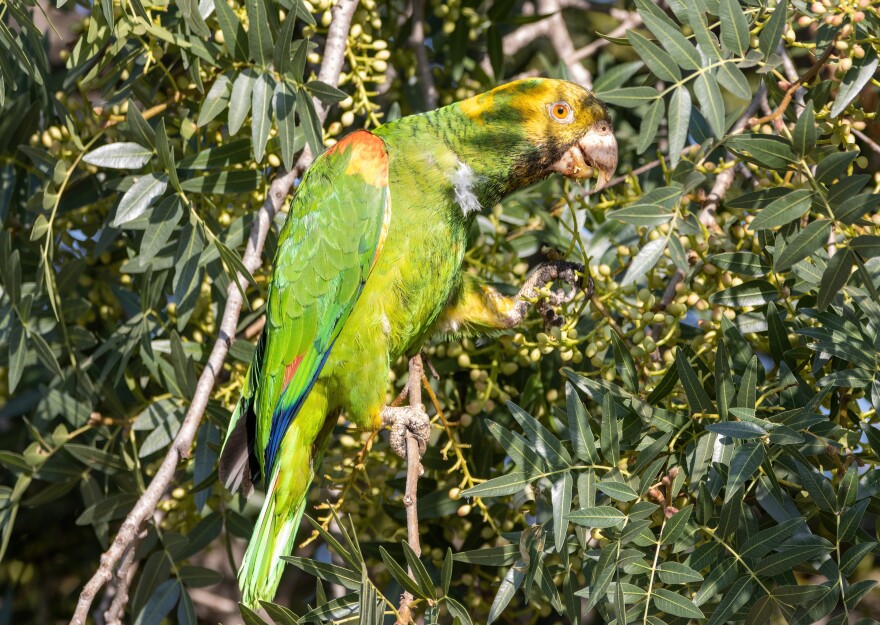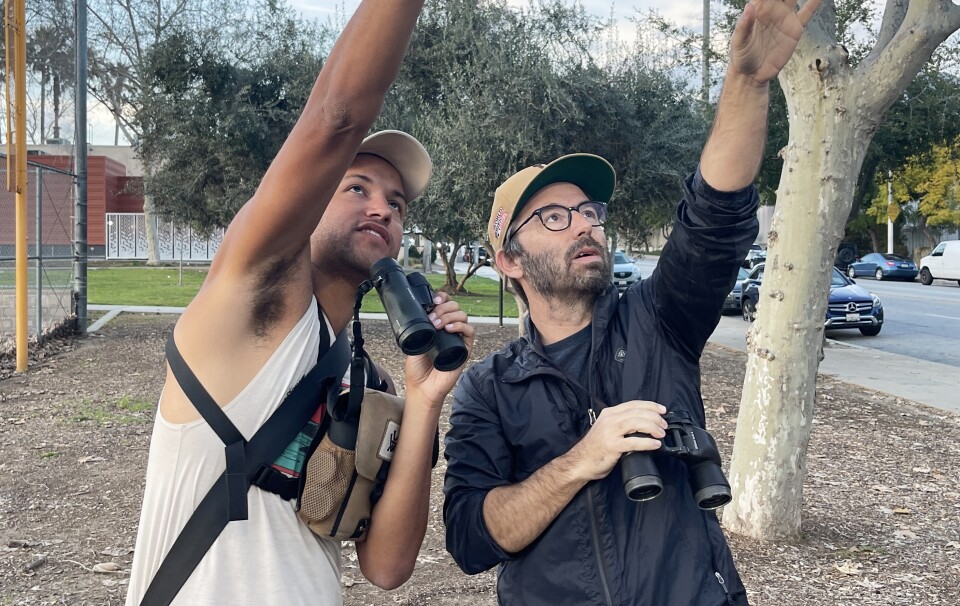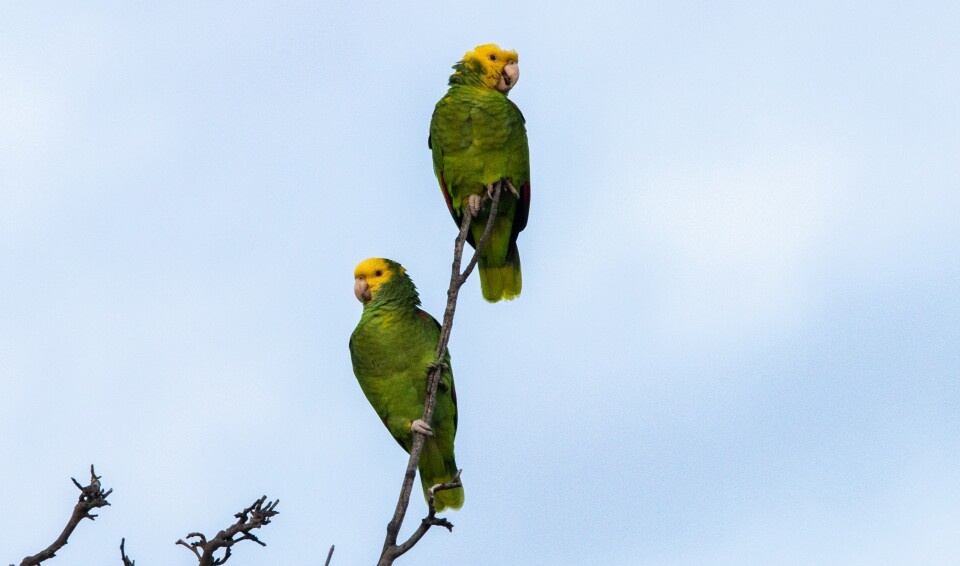With our free press under threat and federal funding for public media gone, your support matters more than ever. Help keep the LAist newsroom strong, become a monthly member or increase your support today.
Scientists Need Your Help Studying LA's Boisterous Parrots

Parrots have been waking up Southern Californians with their squawking for more than 70 years now. Assumed to have arrived here as part of the pet trade as far back as the 1950s, they're originally from Mexico, where they're endangered.
Now, they're thriving in places like Los Angeles, their numbers exploding over the past decade.
That success may not seem like a surprise to you if you've been listening to them chatter away outside your apartment, or fly en masse from one city block to another.
However, their rise has captured the interest of academics, like those at Occidental College, who took me on a parrot outing in Pasadena, and made the case that they need the public's help to truly understand the birds.

A lot to learn
The team at Occidental set out to explore how and why the parrots have been thriving. It's curious because our environment is wildly different than where they come from in Mexico. It's colder here, with more development and less vegetation.
One of the reasons for their success seems to be — much like with the Swinhoe's white-eye — that over the past century, we inadvertently built an ideal environment for the parrots by importing non-native subtropical plants, kept alive with supplemental irrigation.
"We have this abundance of exotic trees that they've been able to take advantage of that none of the native species have been using. And so it was that perfect opening for them to be able to come in and thrive here," said Brenda Ramirez, staff lead of the Free Flying Los Angeles Parrot Project at Occidental College and lead author on a recent paper that looked specifically at red and lilac-crowned parrots.
They seem to love loquats, she said.
Another factor behind their rise is likely just their general ability to adapt.
"They seem to have some behavioral plasticity, in the sense that they can change their behaviors," said John McCormack, director of the Moore Lab of Zoology at Occidental. He joined us in the field alongside a colleague, Russell Campbell.
Parrots are quite smart and tolerant of a range of conditions. They're able to figure out survival in new habitats and which food sources will work for them — though, there's likely a limit to this adaptation, as they're often found in areas where the temperature doesn't usually drop below freezing like in Florida and Texas.
It also probably helps that they don't have any natural predators here.
Could we see a new parrot evolve?
Another fascinating aspect is that though different types of parrots have congregated here from various parts of Mexico, they're commingling and in some cases, are believed to be cross breeding and hybridizing — though it's not common.
"There is definitely evidence for hybridization," said McCormack.
"They look kind of halfway in between red-crowned and lilac-crowned, or they look like red-crowned with a little dash of yellow in the head, so maybe the hybridization is with yellow-headed parrots. We're just starting to get some DNA evidence where you can see it in the DNA as well."
There's a remote, theoretical possibility that we might even eventually see a unique Southern California parrot develop.
"That doesn't seem to be happening in the city right now, but you never know. Evolution's a journey and you don't know where it's gonna end up," said McCormack.

How you can help scientists study the parrots
One of the best ways for scientists to research bird movement, behaviors and adaptations, is with regular in-field documentation, which is where you come in. Academics can pull data from eBird (Cornell University) and iNaturalist, a free app that you can download and use to both identify and take pictures of birds that you find. That's where Ramirez pulled information from for the latest study.
"The more people involved, the better," she said.
"We could potentially even draw habitat data and dietary data, because a lot of the time you'll see them eating or interacting with one another, and so there's tons of data that we can pull from these community science observations."

Where to find parrots
If you'd like to go parrot spotting, Campbell recommends you head to one of the spots in the below map either right at dawn or dusk.
You can also visit eBird to find other potential roost sites near you.
When you get to your viewing spot, you're probably going to hear the parrots before you see them. And it's inevitable that when you do finally spot them, they'll all randomly fly away at once in search of another spot to sleep for the night.

There are lots of different parrots to go looking for. Campbell passed along this list with recommendations for Southern Californians:
- Red-crowned parrots, lilac-crowned parrots and red-masked parakeets: Primarily in Northeast L.A.
- Yellow-headed parrot: Almost exclusively in Pasadena.
- Mitred parakeets and yellow-chevroned parakeets: Widespread across the L.A. area.
- Nanday parakeets: Malibu, Santa Monica and throughout the Santa Monica Mountains.









